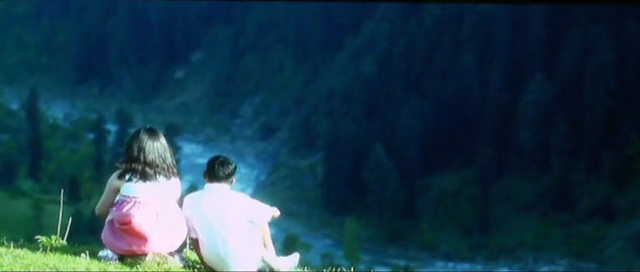These are my thoughts and interpretation of
Imtiaz Ali’s film ‘Highway’. This article has spoilers.
I admit it. Having seen Imtiaz Ali’s ‘Highway’ three times
in the movie hall and two times on my laptop in a week’s time, I can conclusively
admit that I am obsessed with the movie. More than the movie, I am obsessed
with the characters of Veera Tripathi and Mahabir Bhati, and the rare relationship
that they share. Unlike all those who feel it was just another love story
between two incompatible beings, I believe the psychology of it is much deeper
and complex.
Veera Tripathi has always lived a life with imposed boundaries.
She stays within hotel premises during holidays, is driven around the city with
security, and has to be ‘tameezdar’
with people she loathes. So when she is exposed to visual wonders of the
interiors of India she cannot help but explore a life that lets her be herself
and potentially fulfill her dreams. Notice the scene when she is apologizing to
Mahabir for being rude to her and he shouts at her and tells her
‘Apne baap ke ghar
dikhaiyo tameez’
This stumps her as she has always been told to be ‘tameezdar’,
even to her uncle who used to abuse her when she was a child. She grows fond of
Mahabir even though he hits her, drags her, gags her, and is almost always
harsh towards her because he becomes a kind of protector that even her parents
weren’t. He saves her from the advances of Goru and this probably becomes the
foundation of her affection towards him. Compare the attitude of Vinay, Veera’s fiancé,
and Mahabir towards Veera. Vinay is polite but discourages her from stepping
out at night for some fresh air and tells her ‘Maine kaha tha’ when she is held hostage. On the other hand,
Mahabir is harsh but lets her be herself. With Mahabir, she can be rude, wash
her hair in dirty water, climb trees, sing and dance on roads, travel on bus
rooftops, trek on snow-clad mountains, and even hold a gun. She can share her
vulnerabilities with him and can demand a hug when she needs it. Veera Tripathi
is not in love with Mahabir but she needs him to find her true self.
‘Hi Veera. Kaisi ho yaar? Kaisi ho… Soch ke
batati hun’.
Mahabir Bhati himself is a product of a harsh childhood
comprising a violent father and a mother who had been a victim of rural
prostitution. He has surrendered himself to fate of a criminal and does not
fear the consequences of kidnapping the daughter of a powerful man.
‘Kutto kutto ki hi
maut marogo’
He understands more about bullets and crime.
‘Ek goli me aadmi
khatam ho jaata hai na?’
‘Do aadmi. Ja pe
chale hai aur jo chalawe hai.’
But when Veera smothers him with her innocence, he cannot help
but reminisce and yearn for the motherly love that was once showered on him by
his mother. He, who at first hits and gags Veera, becomes surprisingly tolerant
with her encroachments into his past. However determined he is to sell her off
at a brothel, he fails to bring himself to push her into a life from which
there is no coming back – a life that resembles his own. He has committed three
murders and he knows there are only two paths: a long life of a fugitive or a
short life with a few moments with a girl who is giving him everything he has ever
yearned for – care, feminine tenderness, and a simple domestic life. Not
surprisingly, he chooses the latter. And when she eventually gives him a
glimpse of his new chosen life, he cannot help but cry aloud on the realization
that this is what he wants dearly but cannot have it for long.
‘Ye kabhi na ho sake
hai. Bahut duur nikal gaye ho mai’
Mahabir did not love Veera. He just needed her to replicate
the few good moments he had in his life and to comfort him before a certain
death.
I personally love the story because it invokes in you strong
emotions that you may or may not relate to. Through circumstances, two
difficult lives converge into a symbiotic relationship and create a beautiful
space for themselves that is peaceful, simple, meaningful, and real. You can
almost feel their desperate need to be together irrespective of the place or
condition. But then a shot is fired and everything you have ever hoped for is
taken away from you and there is little that you can do about it. There is a
feeling of extreme helplessness that you must deal with.
Veera eventually finds herself but loses the means. Her mind
is now free and reborn with new life. She can experience the wonders of the
world just as a child does.








